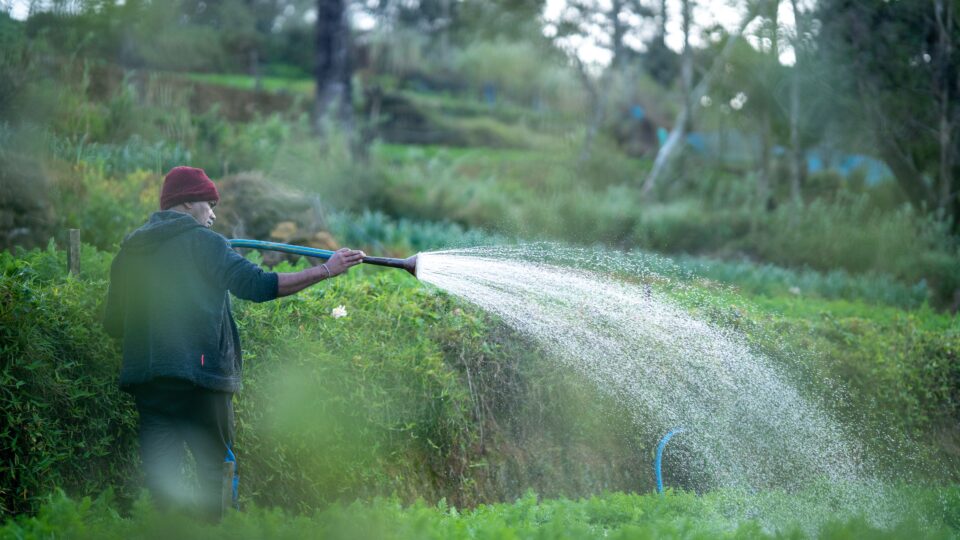Do you prefer organic fruits and vegetables, but balk at the high costs? Do you enjoy doing things yourself rather than paying someone to do a shoddy job? Then why not grow your own organic produce right in your home garden? Read on to find out how to start making your own produce and have fun doing it!
If you have a young baby, consider wearing your child in a backpack while you garden. Being outdoors is a great stimulating experience for an infant, plus they get to spend more time with you. Organic gardening is safest for baby, as there is no risk of them encountering harsh or dangerous chemicals while you work.
When watering plants use recycled water, but avoid re-using water from sources such as baths, washing machines, or dishwashing. These water sources may contain harmful chemicals that can be absorbed into your vegetables such as nitrates and phosphates. This water may even contain pathogens that could harm you or your plants.
A great way to calculate the timing for planting your plants in an organic garden is to use a seed-starting chart. You should do your research and fill in the chart in advance. Once you have it, you can use the chart to plan your planting through the entire season.
To keep air flowing through your compost pile, stand a large PVC pipe with punched holes in the center of your pile so the air flows up and down the pipe, and then through the holes directly into the pile. The air movement helps your soil decomposers create the heat needed to jumpstart the decay process.
Do not get rid of weeds by pulling them. This takes you a lot of time and they might grow back. If you notice an area with a lot of weeds, take a shovel and dig under it. Turn the soil over so that the weeds feed your seeds like manure would.
The best way to water your organic garden is to use a soaker hose. Soaker hoses not only conserve water, but also direct the water exactly where it needs to go, into the dirt, rather than on the leaves and into the air. By watering the leaves, you leave your plants susceptible to fungus growth.
Choose a site for fruit trees depending on their specific requirements. Most fruit trees require 8 hours of sun per day. Morning sun is important, as it dries dew rapidly, helping to prevent fungus. Avoid planting fruit trees in a low spot in the garden where frost or cold air can collect. Some fruit trees are especially susceptible to late frost damage, and are better planted on a north-facing slope. This is especially true for peach, plum, cherry and apricot trees.
The best and most natural way to fertilize an organic garden is with compost. Compost can be made from anything that was once alive. Don’t discount the value of your kitchen waste, leaves, grass clippings or anything else that was once alive. By composting it all, you will give invaluable life to your organic garden.
Add vines to your landscape. You can get a wide range of plants that are vines. Some ornamental, and some fruit or vegetable varieties. Vines can grow up most fences or structures. Use them to create more interesting landscapes in your yard. Have them grow up an awning, and create shade for you.
Try using a beer trap to naturally eradicate slugs from your organic garden. Place a jar into the soil so that the top of it’s mouth rests parallel with the soil. Fill the jar with beer about an inch lower than the top. The slugs will be drawn to the beer and then drown in the jar.
If you are going to go organic in your gardening efforts, be sure to mulch your garden with at least 3 inches of organic material. This will help to conserve water, add nutrients and humus to the soil and will discourage weeds. It also gives your garden a nice appearance.
Choose the correct spot for growing organic vegetables. An organic garden needs to be self-sustaining, with the ability to defend itself from damage. This defense is promoted by four factors: water, sun, soil and air circulation. Choose a sunny spot, preferably with both morning and afternoon sun. In humid areas, morning sun is important to dry dew quickly, avoiding fungus. If your soil is clay or sandy, amend it with peat to improve water retention and drainage.
Try to get a good composition of healthy soil in your garden. Healthy soil is generally more resistant to pests and other negative influences. How can you tell when a soil is “healthy?” Generally a healthy soil contains a good combination of earth worms, helpful microbes, and a good deal of mulch and compost on the surface area.
When planting your tomatoes in your organic garden, add compost around the stem and trim the upper leaves. This will assist your tomato plants in growing in the best way that they possibly can. You should aim to do these things as soon as the first fruit begins to ripen.
Not only will creating your own garden save you money and give you healthier fruits and vegetables, but it will also help your state of mind as you work in your garden and grow your very own food. Use these tips to become your own farmer, and reap the benefits!
